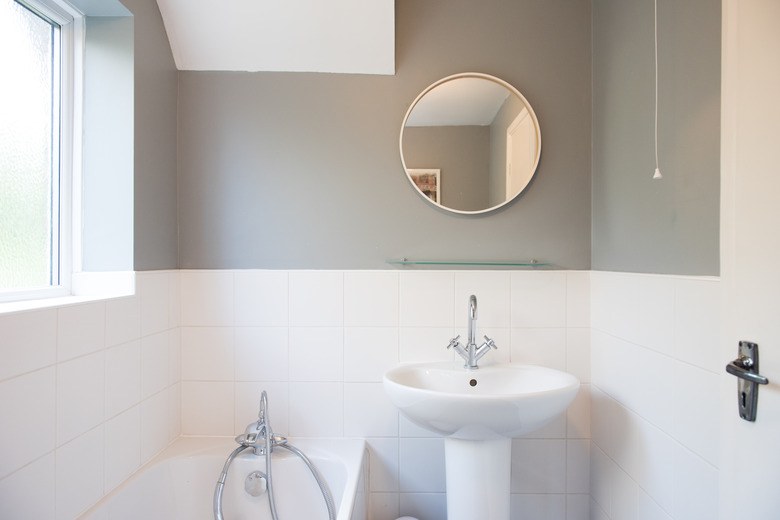How To Remove A Pedestal From A Sink
We may receive a commission on purchases made from links.
A pedestal sink is basically a version of a wall-hung lavatory in that the sink is attached to the wall studs and doesn't need the pedestal for support. When a plumber installs the sink, it gets fastened to the wall and the pedestal goes in only after all the plumbing has been completed. This means you can remove the pedestal without removing the sink or plumbing.
Removing a Sink Pedestal
Removing a Sink Pedestal
If you examine a sink pedestal closely, you probably won't be able to figure out how it's attached to the sink, and that's because it's designed to slide onto a notch on the bottom of the sink. The only fasteners holding it in place are two bolts that secure it to the floor. The sink itself is securely bolted to the studs, as explained by Remove and Replace, so after completing the plumbing, the plumber slides the pedestal into position and bolts it to the floor.
You uninstall the pedestal by reversing the procedure for installing it. That procedure is no more complicated than removing the bolts holding it to the floor using a socket wrench and sliding the pedestal forward until it's free from the sink. The base of the pedestal may have a bead of caulk around its perimeter sealing it to the floor, and if so, you have to cut through the caulk with a utility knife before the pedestal will move.
Don't angle the pedestal by pulling on the bottom or it won't move and may chip the sink or suffer chipping itself. Put one hand on the top of the pedestal and one hand on the bottom so you can keep it upright. It may help to push up on the edge of the sink with your shoulder and raise the pedestal slightly from the ground to make it slide more easily.
Removing the Sink Itself
Removing the Sink Itself
If you need to remove the entire sink, keep the pedestal close by because you'll need it to support the sink after you've unbolted it from the wall. After removing the pedestal, disconnect the P-trap, turn off the water valves and unscrew the supply hoses. When you're done, slide the pedestal back into position, cut the caulk around the sink with a knife and unscrew the bolts holding it to the wall.
When the bolts are gone, the sink will be resting entirely on the pedestal and you can lift the whole assembly away from the wall. The base of the pedestal should be wide enough to support the sink without tipping, so you can set it down upright in any convenient spot to remove the faucet and, if needed, the drain assembly.
The Sink Is Glued
The Sink Is Glued
Some homeowners, and even some plumbers, think it's a good idea to give the sink extra support by gluing it to the wall with silicone caulk or construction adhesive. Expect some damage to the wall when you try to remove the sink, says Las Vegas Handyman. At a minimum, the sink will tear the drywall, and in a worst-case scenario, you may have to break the sink to get it off.
To break the glue bond, slip a stiff metal putty knife behind the sink and tap it with a hammer. Work your way around the back of the sink until it separates enough for you to pull it away. Don't worry too much about the wall because drywall damage is easy to fix.
